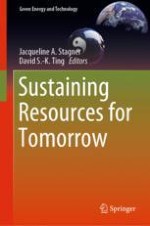2020 | OriginalPaper | Chapter
Tomorrow’s Green Buildings: Optimum Natural Insulation Material Modeling
Authors : Lutfu S. Sua, Figen Balo, Ukbe Ucar
Published in: Sustaining Resources for Tomorrow
Publisher: Springer International Publishing
Activate our intelligent search to find suitable subject content or patents.
Select sections of text to find matching patents with Artificial Intelligence. powered by
Select sections of text to find additional relevant content using AI-assisted search. powered by
